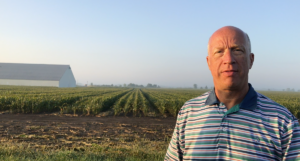“Free seed can cost a lot of money.” That was dad’s less-than-tactful response to a seed salesman hoping to woo him with a special offer. Was dad exaggerating (as he was notoriously known to do)? Not in this case. Even using today’s financial standards – where seed costs have more than quadrupled in the 30 years since dad made his epiphany – it still holds merit. Current seed corn costs run about $120 per acre. Based on the 2023 University of Tennessee corn yield trials (across eight locations) the difference between the top and bottom performing corn hybrids was 29 bushels per acre (keep in mind seed companies don’t enter their poorest hybrids in these trials). At the 2024 federal crop insurance premium price of $4.66 per bushel, the net revenue difference between the top and bottom hybrid is $135.14. So even if you got the lowest ranking hybrid for free, you’d lose over $15 per acre by planting it compared the best hybrid. Seed selection is one of the most critical annual decisions a farmer makes. Everything starts with genetics, and all cultural practices and crop inputs are used to best optimize that genetic potential.
What’s the key to seed selection? It starts with diversity. Some years ago, a famous seed company came up with the line “pick three for success.” The idea was to manage risk by selecting at least three different genetic products; a “don’t put all your eggs in one basket” approach. If conditions were ripe for one genetic line to falter, there’s a good chance the other two will protect you. Most growers still utilize this approach. That works great if you buy all your seed from one company, since your rep could identify different genetic lines. But a potential “watch out” occurs if you buy from multiple sources. While local farmers have dozens of national, regional and local seed brands to choose from, due to the massive investment and resources required, only a handful of seed companies (mostly those who are divisions of the giant life science companies) produce proprietary genetics. The rest source parent lines from foundation seed suppliers, notably Corn States. Let’s say you buy seed from three different regional or local seed companies. And you purchase each company’s top performer. There’s a likelihood that you could be purchasing the exact same product, or very similar products, produced and marketed under different names. Among growers who buy from multiple seed companies, many will choose one or two national players, a regional or local company.
I’m getting ready for #Plant24, having picked up my seed corn last week. I’m going back to the “Southern Stud,” Agri-Gold 6659. It’s a hybrid I know how to grow. Three seasons ago I made 333 bushels per acre with it (since I surpassed the 320 bu/A threshold, I had to submit a second pass, so I finished second in the state). Two years ago, I grew 279 bu/A with it during our worst drought on record. Other than the herbicide, all of my crop inputs will consist of Huma branded products. I’ll be updating progress throughout the season.
Don’t look for interest rates to drop any time soon. Based on numbers released last week, the consumer price index is up 3.5% for the year, while food prices are up 2.2%. Fueled by rising gas prices, a 22% hike in auto insurance, and continuing higher costs for rent and food, inflation keeps growing. Wishful thinking some had folks speculating that interest rates could see a reprieve. Personally, I suspected that was false hope, as “essential expenses” (food, energy, transportation and shelter) are still running out of control. But such hopes generated a slight uptick in farmer sentiment last month. Fiscally speaking (i.e. provided there is no political year pressure), it’s unlikely the Fed would be in any rush to lower interest rates, as ideally they want inflation to slow to 2% before tinkering with rates. High interest rates have a significant impact on farmer’s buying behaviors, related to both what and when they buy products.
Related Posts

This Week in Ag #11
You shouldn’t judge a book by its cover, but you can judge seed products by their bag covers. There’s lots of telling information on them. Just look at this bag of seeds going on my farm. The bag itself prominently features the brand name and logo (AgriGold), type of product (corn), the actual product name (A647-79VT2PRO) and

This Week in Ag #28
The recent fertilizer market may be best described by two catch phrases: “wait-and-see” and “just in time.” In the fall of 2021, sky-rocketing energy prices pointed toward looming inflation and an inevitable rise in fertilizer prices. Many savvy growers, including those aligned with the regen ag movement, hedged their bets by purchasing crop nutrients that

This Week in Ag #33
In commodity crop production, we talk a lot about bushels per acre. Because that’s how farmers get paid. But what exactly does bushels per acre mean? A bushel is the unit of measure we use in the USA (other parts of the world use tons or metric tons) to calculate yield, verify shipments and set pricing standards for crops such as corn, soybeans, wheat, canola, rice and sorghum. There’s a good chance your grandparents had a bushel basket laying around their house, garage, or barn. If you were to fill that basket to the brim with corn, you’d have one bushel’s worth.

